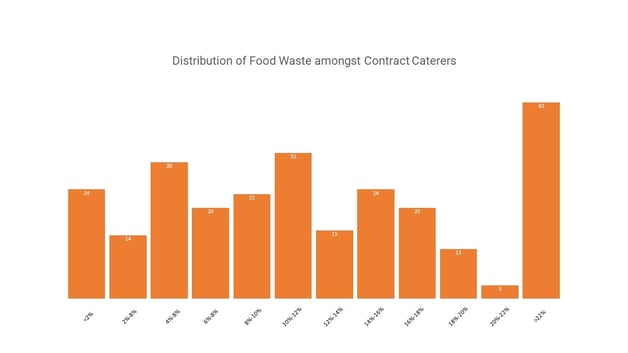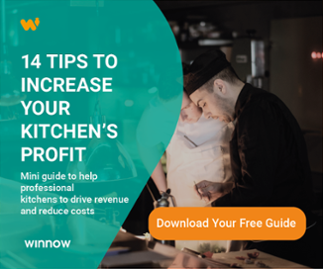Everyone in the food service world knows that there is food waste in the kitchen. What fewer people know, however, is what that waste is worth financially to the British catering sector.
Sensible catering companies with a good sense of cost control generally estimate that for every £100 spent on food, around £5 of it is going to end up in the bin. But there is a distinct lack of actual data on this topic.
Since 2013, we at Winnow have worked with hundreds of different kitchens, and we are now operating in more than 30 countries. In our journey we have filled servers with valuable food waste data from a range of large commercial kitchens.
In my desire to find the truth, I whipped out my wetsuit and jumped into this vast sea of analytics to see how UK caterers are doing. I aimed to answer one simple question: is that 5% figure a good estimate for the amount of food waste in the average contract catering kitchen?
Now, I am a huge data geek. I’ve been lucky enough to work with some of the best analytics companies in the hospitality business. I’ve watched elite hospitality operators sift through endless spreadsheets to cost wine effectively, sneak an extra percentage point of GP on cocktails, and balance staff numbers against project revenue across hundreds of outlets. I have been amazed by how data shapes the decisions of leading operators across the globe.
What I discovered when analysing Winnow’s data, however, blew me away. It turned out that only 9% of caterers manage to sneak under this 5% wastage expectation.

I couldn’t believe it. This would be a huge industry-wide underestimation of the true value of food waste in kitchens. There was no way this could have been missed; there must be something odd in the data. Or, perhaps, a particular vertical that’s driving up the overall waste figures.
I see all of the business and industry caterers who are bossing their food costs smiling smugly. Surely it’s the education caterers with their stringent rules around costs per child and nutritional budgets that drive up the food waste numbers? I zipped my wetsuit back up. 
In the education vertical the situation actually turned out to be broadly similar to the industry at large. In fact it was a bit better - 18% of kitchens were wasting 5% or less of their food budget, compared to 9% of all caterers. Congratulations, you’re more likely to hit your 5% food waste target than have your application accepted by Oxford University – by a single percentage point.
So we’ve established that very few caterers are wasting just the 5% of food costs they think they’re wasting. But what about the other end of the scale? What chance do you have of discovering that your food waste is so out of control that more than 20% of your food spend is going in the bin? Those of you with an eye for numbers will certainly notice that the averages are quite far up the bell curve. Well, this is perhaps the most shocking part of all of the data provided by Winnow.
.png?width=480&height=289&name=image%20(3).png)
It’s not all bad, though. Sure, the actual value of food waste in your kitchens is probably twice as much as you’ve budgeted for, and your 5% target is grossly optimistic. But this is not a problem - it’s an opportunity, a vast financial opportunity. An opportunity that is good for your bottom line and great for the environment.
With the right analysis you can calculate to the penny the value of the food you are needlessly wasting. Digital tools can tell you exactly what is going into your bin, tracking the weight and financial value of those products. Consolidated reporting can identify easy wins like overproduction, as well as further long-term waste reductions available through fine-tuning processes, people and purchasing. Re-use of food that would otherwise have been wasted has become the standard, and it’s now possible to track exactly how much it’s adding to your bottom line.
So, what does this means for you, the modern contract caterer? It means you're on the new front line in the war on waste. And, armed with the right digital technology, it's a war that chefs are going to win.
Photo credit: Caroline Attwood via Unsplash










Comment on my blog